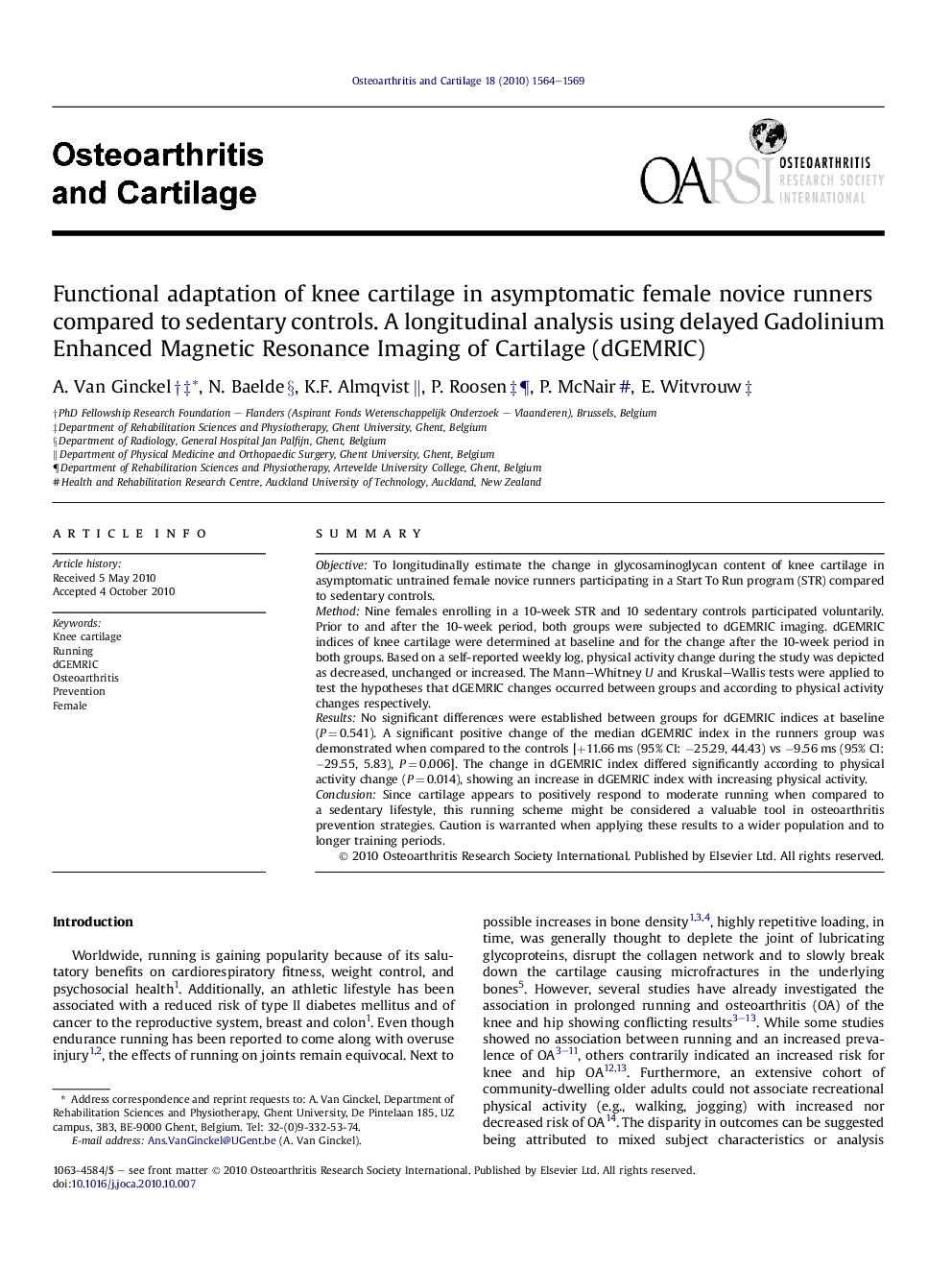| Article ID | Journal | Published Year | Pages | File Type |
|---|---|---|---|---|
| 3380942 | Osteoarthritis and Cartilage | 2010 | 6 Pages |
SummaryObjectiveTo longitudinally estimate the change in glycosaminoglycan content of knee cartilage in asymptomatic untrained female novice runners participating in a Start To Run program (STR) compared to sedentary controls.MethodNine females enrolling in a 10-week STR and 10 sedentary controls participated voluntarily. Prior to and after the 10-week period, both groups were subjected to dGEMRIC imaging. dGEMRIC indices of knee cartilage were determined at baseline and for the change after the 10-week period in both groups. Based on a self-reported weekly log, physical activity change during the study was depicted as decreased, unchanged or increased. The Mann–Whitney U and Kruskal–Wallis tests were applied to test the hypotheses that dGEMRIC changes occurred between groups and according to physical activity changes respectively.ResultsNo significant differences were established between groups for dGEMRIC indices at baseline (P = 0.541). A significant positive change of the median dGEMRIC index in the runners group was demonstrated when compared to the controls [+11.66 ms (95% CI: −25.29, 44.43) vs −9.56 ms (95% CI: −29.55, 5.83), P = 0.006]. The change in dGEMRIC index differed significantly according to physical activity change (P = 0.014), showing an increase in dGEMRIC index with increasing physical activity.ConclusionSince cartilage appears to positively respond to moderate running when compared to a sedentary lifestyle, this running scheme might be considered a valuable tool in osteoarthritis prevention strategies. Caution is warranted when applying these results to a wider population and to longer training periods.
